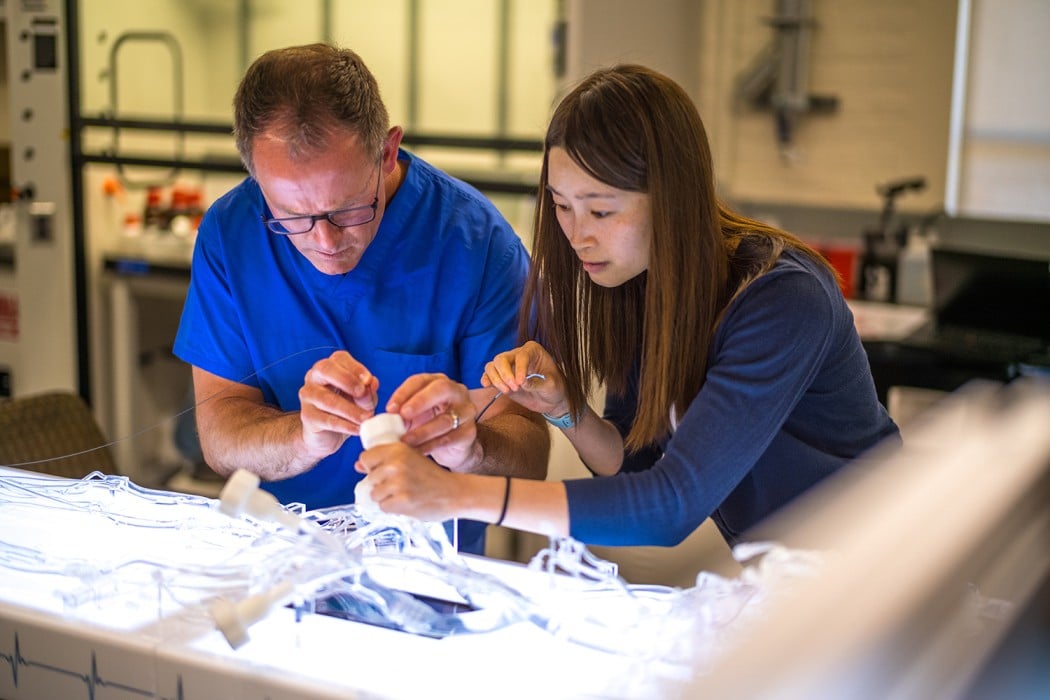Stanford University researchers have developed a groundbreaking device called the “milli-spinner thrombectomy” that removes blood clots more effectively than current methods. This innovation, published in Nature on June 4, 2025, could transform how doctors treat strokes and save countless lives.
Why Strokes Are So Dangerous
When someone has an ischemic stroke, a blood clot blocks oxygen flow to the brain. Every minute counts – the faster doctors remove the clot, the more brain cells survive and the better the patient’s chances of recovery.
The Problem with Current Treatments
Current approaches to blood clot removal succeed on the first try in only half of all cases. Research shows that existing methods completely fail to work in roughly 15 percent of patients. Current approaches typically use catheters to either:
- Vacuum up the clot (aspiration)
- Snare it with wire mesh (stent retrievers)
These methods often break up clots, causing fragments to travel to new locations in the body, creating additional blockages.
How the Milli-Spinner Works
The milli-spinner takes a completely different approach. Instead of breaking up clots, it shrinks them.
“What’s unique about the milli-spinner is that it applies compression and shear forces to shrink the entire clot, dramatically reducing the volume without causing rupture,” explains Renee Zhao, assistant professor of mechanical engineering and senior author of the study.
The device is a long, hollow tube with fins and slits that creates suction near the clot. When it spins rapidly, it applies two key forces:
- The device applies pressure by pushing the clot against the end of the tube
- Shear – spinning motion that rolls up the clot’s fibrin threads
Think of a tangled ball of cotton fibers. If you press it between your palms and rub your hands in circles, the fibers become increasingly tangled into a smaller, denser ball. The milli-spinner does this to the fibrin threads in blood clots.
Testing has shown that this technology can reduce clots to a tiny fraction of their original volume – just 5% of their initial size. Red blood cells trapped in the clot are freed to flow normally, while the tiny fibrin ball gets sucked into the tube and removed from the body.
Similar Post
Impressive Results
The milli-spinner’s success rates are remarkable:
- For typical clots: More than double the effectiveness of current devices
- For tough, fibrin-rich clots: 90% first-pass success rate (compared to only 11% with current methods)
“It’s unbelievable. This is a sea-change technology that will drastically improve our ability to help people,” says Jeremy Heit, chief of Neuroimaging and Neurointervention at Stanford and associate professor of radiology.

Beyond Strokes
While initially focused on stroke treatment, the milli-spinner could potentially treat:
- Heart attacks
- Pulmonary embolisms (blood clots in the lungs)
- Other clot-related diseases
The scientists are looking into additional applications, including the possibility of using this technology to extract kidney stone fragments.
The Path to Patient Care
According to the source material, the researchers have formed a company that has licensed the technology from Stanford. They intend to prepare the device for commercial use and begin clinical testing soon.
Future Possibilities
The research team is working on advancing the technology further. They envision a version that wouldn’t need to be attached to a catheter but could move independently through blood vessels to find and remove clots.
This breakthrough stems from Zhao’s previous work on millirobots – tiny, origami-based robots designed to swim through the body to deliver medicine or assist with diagnostics. What started as a propulsion mechanism led to an unexpected discovery that could transform stroke treatment.

















